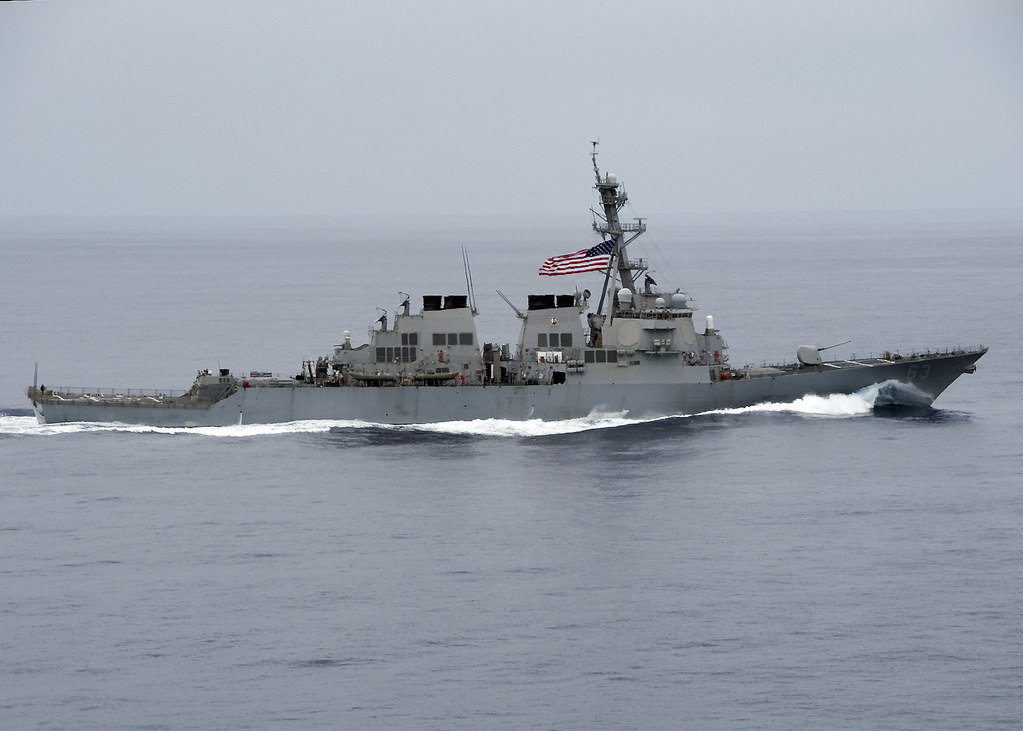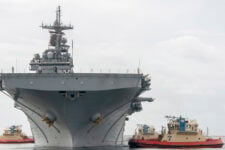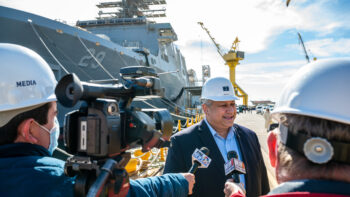
USS Stethem (DDG 63) steams through the western Pacific Ocean. (File)
WASHINGTON: House authorizers are poised to grant the Navy eight battle force ships in their annual defense policy bill, including a second destroyer originally cut from the budget request — but committee aides caution that the Navy should stop banking on Congress to save big ticket items that end up on the annual service wish lists.
The House Armed Services Committee (HASC) is marking up its version of the annual defense policy bill this week, with the seapower and projection forces subcommittee scheduled to do so on Wednesday afternoon.
The Navy this year included an Arleigh Burke-class destroyer on its unfunded priorities list (UPL), angering lawmakers who feel the service is trying to game the system – making a budget cut that is intolerable for lawmakers and relying on them to restore the funding.
The UPLs are funding wish lists that each military service submits following the president’s budget request. They outline a variety of weapons, vehicles and technology upgrades the Pentagon did not include in the president’s budget request, but would still purchase if the money was provided.
After seeing major battle force ships included on that list two years in a row, House appropriators were not amused.
“This represents a troubling trend of underfunding ship acquisition programs and then requesting the removed ship as the highest priority on the unfunded priority list,” according to the committee’s draft policy bill, referencing the Virginia-class submarine included last year.
HASC aides said their mark up does not include language concerning the Navy’s use of the UPLs, but agreed with the appropriators’ language.
“We couldn’t have said it any better than HAC-D did, so we didn’t feel like we needed to kick a dog when they were down,” according to the committee aide. But “I agree with everything that HAC-D said. We’ve been disappointed for now the second year in a row where the Navy in our opinion is gaming Congress.”
Asked how lawmakers might prevent the Pentagon from using these budget tactics in the future, the aide called it a “dangerous game for the Navy to play” and said there is no guarantee Congress will always be able to bail the service out.
“When final tables come out, we had to pay for that ship somewhere. They’ll see that there are other areas where they’ll have to take some cuts that we had to use to put that destroyer back,” the aide added.
Overall, the subcommittee’s mark will include recommendations for two Virginia-class submarines, two Arleigh Burke-class destroyers, one Constellation-class frigate, one ocean surveillance vessel, a towing, salvage and rescue ship and a John Lewis-class oiler. It also provides the full funding to keep Columbia-class submarine production on track.
The draft legislation also includes funding for the tanker security fleet, a program authorized in last year’s defense policy bill similar in structure to the Maritime Security Program; language to require the Navy to incorporate land-based test sites for its next-generation destroyer DDG(X) and provisions looking to shore up the service’s acquisition processes.
Lawmakers did not include any language to block the Navy’s planned cruiser or Littoral Combat Ship retirements and are also aiming to restrict funding for Air Force One until they receive an updated schedule.
Fincantieri acquires Leonardo’s undersea armaments business worth up to $447 million
Terms of the acquisition include the shipbuilder paying a fixed fee of €300 million ($323 million), and “based on certain growth assumptions,” an additional €115 ($124 million) directly relating to performance of the underwater armaments business this year.



























